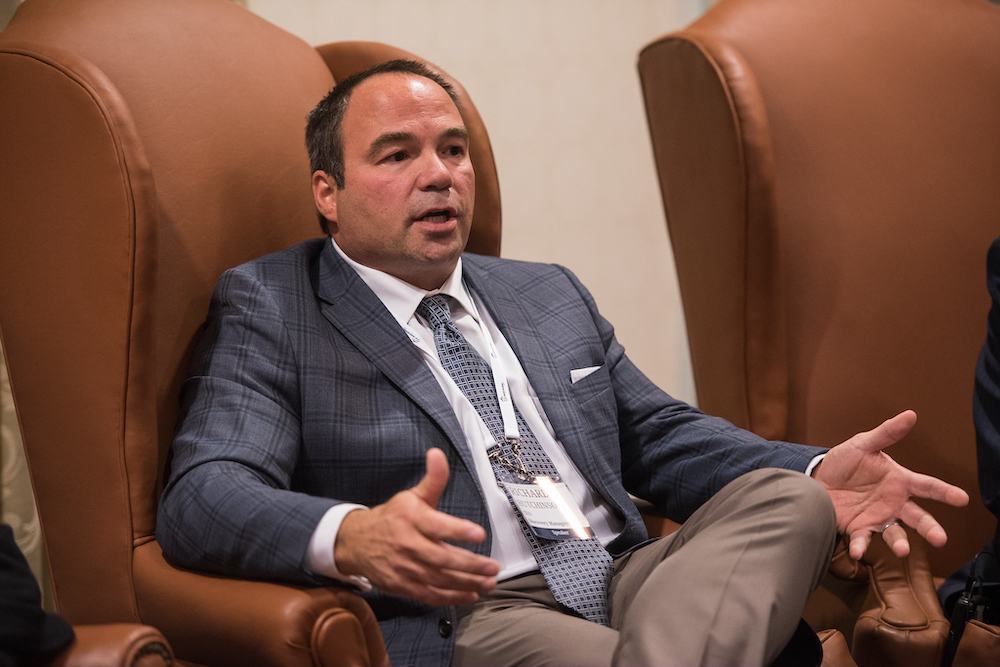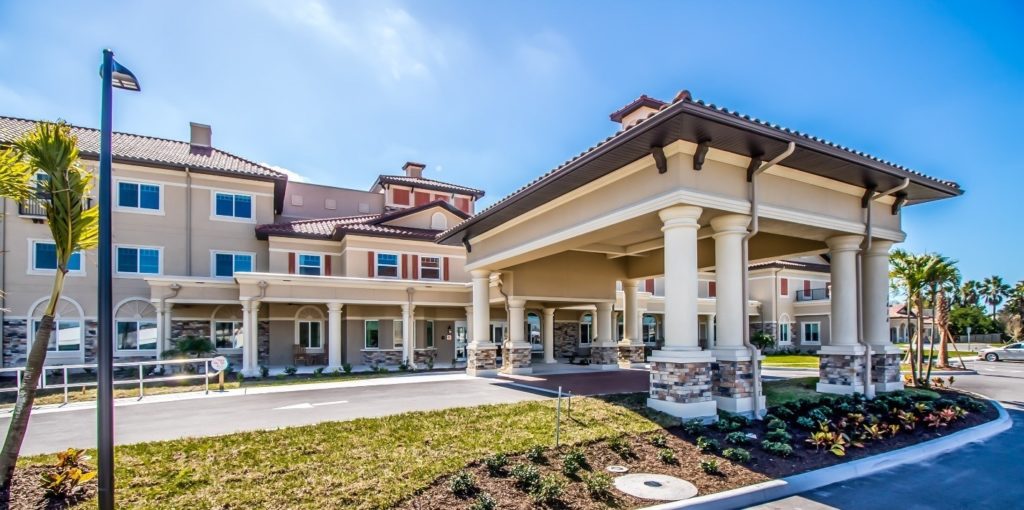By the end of the month, Discovery Senior Living will span 110 communities in 18 states, making it among the largest senior living providers in the United States.
And the Bonita Springs, Florida-based company’s growth doesn’t end there. In 2022, Discovery plans to build on its national and regional identities across the country; and in the first quarter of the year, the company also will break ground on the first of its innovative Discovery Place communities, which center on an “experiential living” philosophy of care, services and amenities.
Occupancy has been a bright spot for Discovery, and while financial results will lag due to elevated expenses, Hutchinson is confident in future margins. While the operator still has some hurdles to vault over this year and beyond, Co-Founder and CEO Richard Hutchinson feels the company has reached a critical “waypoint” in its journey at 110 communities, and that it has the wind at its back for future growth.
“It’s gratifying that we’re able to get here, but we’re not done by any stretch of the imagination,” Hutchinson told Senior Housing News. “Our platform is well-positioned to take advantage of new product development, national brand expansion and certainly, the middle-market.”
At the same time, Hutchinson believes that certain short-term pressures causing consternation, such as inflation, won’t weigh on the industry quite as hard in the long run as some worry.
If 2021 was a turning point for the senior living industry full of hard-won battles and progress, Hutchinson sees 2022 as a year to cement and build on that progress.
“I feel like we have a really good platform now … that will allow us to scale without fail,” Hutchinson said.
 Discovery Senior Living CEO Richard Hutchinson, by Nick Klein for Aging Media Network
Discovery Senior Living CEO Richard Hutchinson, by Nick Klein for Aging Media NetworkInflation ‘teeter-totter’
Cost inflation is one area that senior living companies are nervously watching closely in 2022, especially with margins as compressed as they are. But while inflation is a big worry for some, Hutchinson sees it ultimately as a neutral force that will be ironed out in the long-term.
“It’s a teeter-totter, it’s a balance,” Hutchinson said. “While you end up with hyperinflation on expenses — right now, it’s 7.2% in our basket of goods over the last year — that will be balanced out by passing along those structural increases to your customer over a period of time.”
Hutchinson is not alone in thinking that rate increases will help balance out cost pressures. He believes such increases can be passed on over about 12 to 18 months, driving margin growth in the long-term.
“NOI today isn’t the greatest thing to talk about,” Hutchinson said. “But we know that in 24 months, it will be the thing we want to talk about.”
An occupancy rebound is aiding NOI recovery. In April 2021, Hutchinson said that Discovery was pushing to regain pre-pandemic occupancy levels by the end of that quarter.
“We went beyond same-store pre-Covid levels in July — we had come full circle — and by year-end, we were up 350 to 380 basis points on same-store occupancy,” Hutchinson told SHN earlier this month.
Indeed, Discovery’s occupancy recovery initiative was dubbed “Full Circle,” and it relied on several strategies to rebuild census. One facet of Full Circle involved the company’s centralized sales center, which launched in March 2021.
Theme for 2022
For a glimpse into Discovery Senior Living’s future, one must only look at where the company has been.
Last November, Discovery elevated its TerraBella sub-brand into a regional management company called TerraBella Senior Living, putting it in the same category as Morada Senior Living, the company’s other regional management company.
As subsidiaries, both brands operate largely independently, with dedicated leadership and support and resources from Discovery’s corporate office. Discovery also created two new regional brands called SummerHouse and Seaton.
More recently, Discovery continued its expansion by joining forces with White Oak Healthcare REIT on the acquisition of a 10-property portfolio with communities in Louisiana, Mississippi and South Carolina to be divided up among the TerraBella, Seaton and SummerHouse portfolios.
Covid-19 has accelerated the company’s growth plans, as senior living community owners “have been looking … to execute middle market strategies to get good results,” Hutchinson said.
He explains that Discovery’s regionalized strategy has made the company an attractive partner for these ownership groups.
“My new theme going into 2022 and the talking point you’re going to hear me talk about a lot is the different businesses that make up seniors housing,” he said. “We recognized and I recognize that running a middle-market company is different than running a national, branded, primary-market product.”
In the past, too many national operators have stumbled by trying to operate different types of communities under essentially a single model, he argues.
As Discovery did with TerraBella and Morada, the company has plans to “stand up” both Summerhouse and Seaton into their own regionally focused management companies, according to Hutchinson. Seaton focuses on the Mid-Atlantic from Virginia up to Delaware and New Jersey, while SummerHouse is more geared toward residents in the South.
Hutchinson added that the optimal number of communities with which to create a management subsidiary at Discovery lies between 25 and 30.
But forming a regional affiliate involves more than defining a geography and hitting a particular size — the process involves carefully determining where consumers share common traits. Discovery tailors marketing and operations toward the customs, wants and needs of customers, an effort informed by years of experience working in certain geographic areas.
“What [are] the most important things to the customers in those regions? That’s really the driving factor of this,” Hutchinson said.
As the company’s expertise in certain localities grows, so too will its number of sub-brands, and Hutchinson said it’s only a matter of time before Discovery branches out into launching affiliates for markets in the Midwest and West regions of the country.
“It’s not solely because, geography wise, it’s easier to manage in that area,” Hutchinson explained. “It’s because … there’s a very high commonality in secondary markets in those states of what the customer really wants as an experience.”
Discovery is also growing the company in ways that go beyond a regional focus. Later in the first quarter of 2021, the company will break ground on its first Discovery Place experiential living community. The concept uses business intelligence data to create more customized resident experiences, with a la carte pricing and communities located near amenities and services provided by nearby businesses.
As it works on that product line, Discovery is “going back to the future” in utilizing consumer surveys to fine-tune its resident experience.
“We really need to connect with our current and future customers, and … not just read a report, and then start developing your product around a report,” Hutchinson said. “I want to see the whites of their eyes and have them tell me, with all the nuance, what’s important to them.
To prepare for this moment, Discovery has spent years and “tens of millions of dollars” getting its platform and infrastructure in place. And, Hutchinson credits Discovery’s capital partners with understanding the provider’s strategy.
“We have capital partners who get it,” he said. “We’re going to let data drive us; I’m going to let our experience over a period of time teach us what we need to know.”
Already, Discovery has learned some lessons. For example, from the experience of standing up Morada, TerraBella’s launch involved some additional positions. Going forward, Hutchinson recognizes the need to be nimble, and to draw on lessons being learned on the fly but also from the company’s deep well of experience.
“[Discovery] is growing fast lately in the number of units and communities, but the understanding of how to do it correctly has been decades in the making,” he said.


